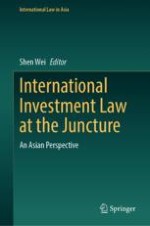2024 | OriginalPaper | Buchkapitel
8. Investor-State Mediation in a China-EU Bilateral Investment Treaty: Talking About Being in the Right Place at the Right Time
verfasst von : Chunlei Zhao
Erschienen in: International Investment Law at the Juncture
Verlag: Springer Nature Singapore
Aktivieren Sie unsere intelligente Suche, um passende Fachinhalte oder Patente zu finden.
Wählen Sie Textabschnitte aus um mit Künstlicher Intelligenz passenden Patente zu finden. powered by
Markieren Sie Textabschnitte, um KI-gestützt weitere passende Inhalte zu finden. powered by
